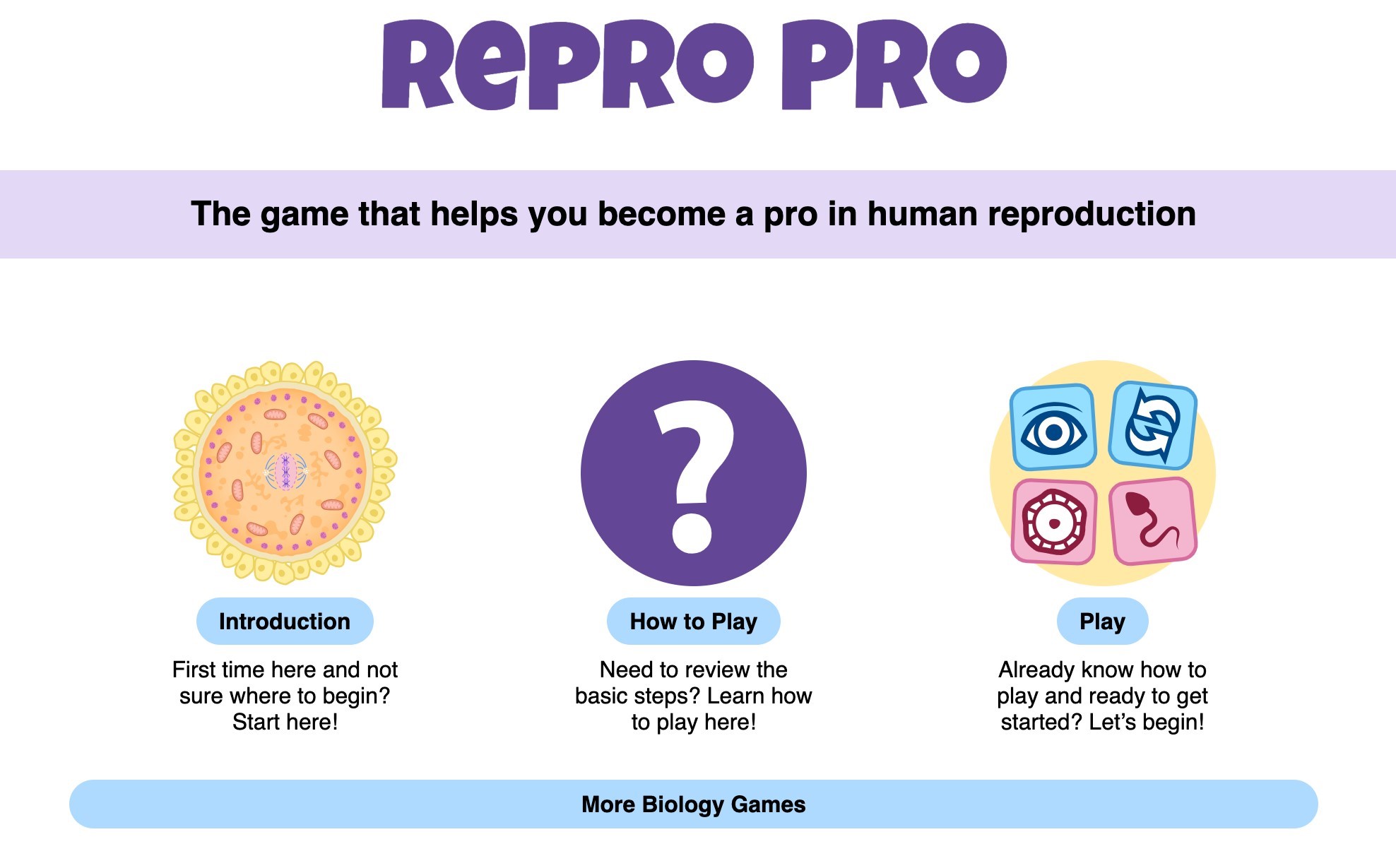Test Your Knowledge of Reproduction with this New Sex Ed Game
By: Matt Tontonoz
ASU Biology and Society graduate Dina Ziganshina is passionate about sex education. She did her PhD dissertation on abortion rates in former Soviet countries, looking at factors that influence those rates.
“The primary reason for abortion is unintended pregnancy,” Ziganshina explains. “And the reason that pregnancy is often unintended is because people are unaware of their fertility.”
That insight gave Ziganshina an idea: why not make it easier for people to learn about fertility in a way that is fun and accessible?
Two years later, the online sex ed game ReproPro was born.
The game is meant to teach students about sexual anatomy, pregnancy, and contraception, all in a way that is fun and age-appropriate. It’s currently accessible from the website of Planned Parenthood of Arizona, which agreed to promote the game as part of its own education efforts.
“This is a good example of the type of creative thinking and innovative work that our students do,” says Jane Maienschein, Director of the Center for Biology and Society as well as University, Regents, and President’s Professor at ASU. “I’m immensely proud of what Dina and her collaborators were able to accomplish.”
Funding for the project came from the Center for Biology and Society at ASU.
Birth of an Idea
Back when ReproPro was just a twinkle in Ziganshina’s eye, she was serving as the Editor-in-Chief of the Embryo Project Encyclopedia, ASU’s open-access online resource for information about the science of embryos, development, and reproduction.
The Encyclopedia had just launched a partnership with ASU’s Ask A Biologist, which began publishing kid-friendly Embryo Tales based on articles in the encyclopedia. Ziganshina was looking for ways to strengthen the partnership and learned from her colleagues that games are some of the most popular educational tools on the Ask A Biologist website.
Initially, she considered a game about genetics involving Mendel’s peas. But there were already many games out there that did that. Sex education, on the other hand, was wide open terrain, which presented a real opportunity for a public service.
From the initial planning stages, ReproPro had a champion in Chuck Kazilek, ASU’s Executive Director of K-12 Outreach and Advisor to the Provost on Academic Technology. Having created and developed ASU’s popular Ask A Biologist program, he was quick to see the value in an online game about sex education.
“So many people, young and old, do not fully understand human development and reproduction,” Kazilek says. “[Those topics] can be challenging to teach in a group setting. People are understandably shy about discussing human reproduction. This game allows someone to explore and learn on their own.”
Kazilek adds that the game is designed in a way that teachers can pick and choose how they introduce some topics, which he says is important because there are school boards that are wary of having sex education taught in schools. “In some districts it is not covered at all and that can result in unwanted consequences,” he says.
Software developer Sabine Deviche led the programming and graphic design for the project. She hopes the game gives people “a welcoming and comfortable space to explore and learn more about the human reproductive system, helping to make this important knowledge clear and accessible to more people.”
Karla Moeller, managing editor of Ask A Biologist and Executive Educational Outreach Coordinator in the Provost’s Office, assisted in the design of the game and was the main editor on the project. She notes that students can learn about “the biology of cells and fertilization, the diversity in people’s reproductive parts, risks for sexually transmitted infections, and about how pregnancy might occur.”
Diverse, Comprehensive, and Inclusive
Ziganshina and her colleagues had several goals for the game. The first was to show a wide variety of realistic drawings of genitalia. “We wanted to show diversity,” Ziganshina says. “We didn’t want to give the idea that there is only one right way for genitals to look.”
The second goal is for people to learn the correct terms used for different parts of the human body. “Everybody, regardless of what gender you are, has some of these parts, and you need to know the correct names for them,” she says.
Third, it was important that the game reflects the most accurate and up-to-date science while still presenting it in a way that is clear and easy to understand. As an example, Ziganshina points to the game’s depiction of meiosis, the process by which sperm and egg are made.
“Meiosis is something you learn about in eighth grade, right? But meiosis has very specific differences in males versus females, and those differences are not taught in schools.”
She explains that, during meiosis in males, one sperm precursor cell will divide twice to form four sperm cells, whereas in females, the egg precursor will divide the same number of times yet produce only one large egg cell as a result; the other products are small polar bodies that are essentially just small bags of unneeded genetic material.
“I wanted to have something that is accurate, but really easy to follow,” Ziganshina says.
Finally, it was important to Ziganshina and her colleagues that the game was as inclusive as possible, while still communicating risks properly. “So, for example, when the game asks ‘Who are you having sex with?’ the possible answers are male, female, myself.”
Think you’re a repro pro? Test your knowledge here!

